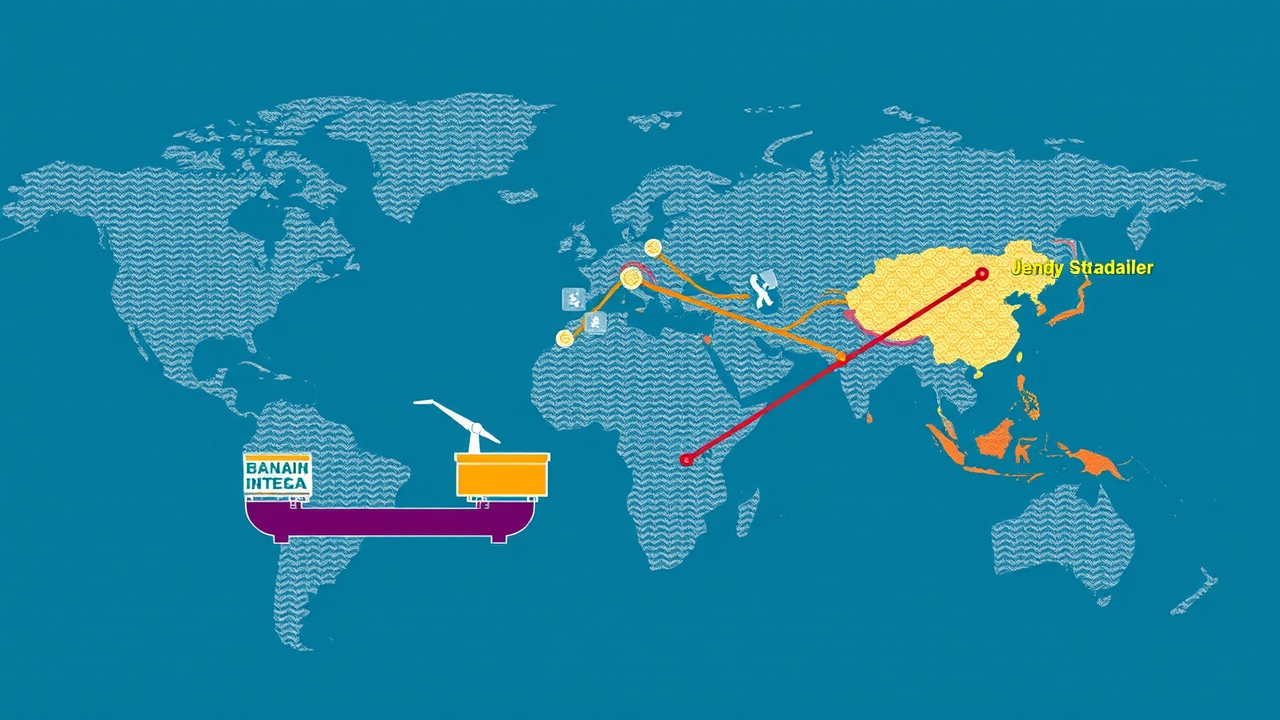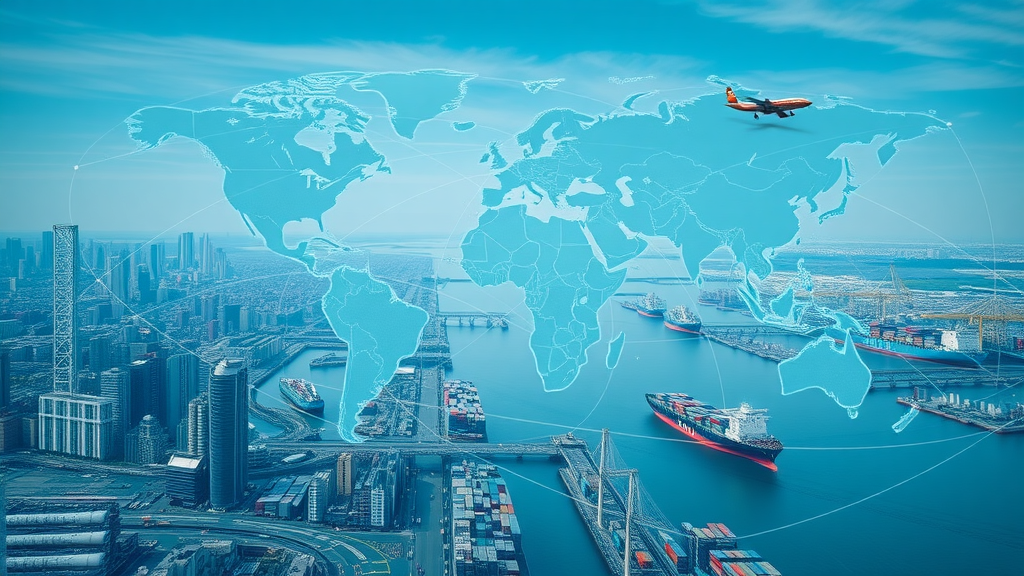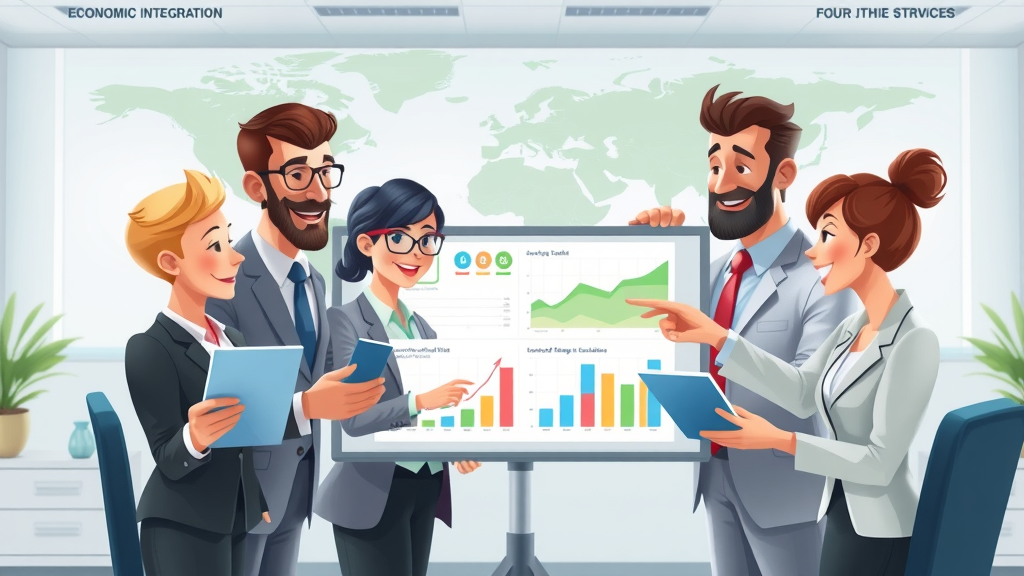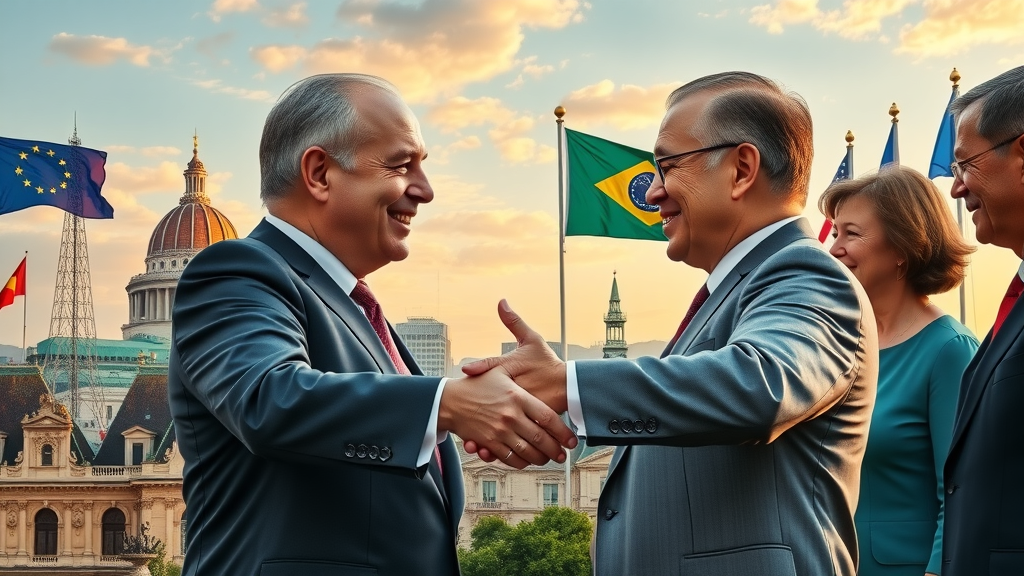Did you know that more than 60% of global trade now occurs between economically integrated countries? This dramatic shift isn't just a statistic—it signals an urgent reality for manufacturers, policymakers, and business leaders. Grasping the nuances of economic integration could be your ultimate lever for navigating today’s fractured global economy, unlocking new markets, and building resilient supply chains. Let’s pull back the curtain on this transformative force reshaping the world’s economic landscape.

Unlocking Economic Integration: Shocking Statistics and Modern Imperatives
Economic integration is no longer a distant ideal—it's the engine powering the majority of world trade today. Figures from recent international economic reports reveal that over 65% of the world’s trade flows within established economic blocs like the European Union, MERCOSUR, and the ASEAN Free Trade Area. Businesses in these regions benefit from reduced tariffs, shared regulations, and coordinated national economic strategies.
For manufacturers and exporters, staying outside these integrated trade areas can mean higher trade barriers, sluggish customs processes, and missed opportunities. Notably, North America’s comprehensive economic framework, marked by agreements like USMCA (formerly NAFTA), fuels the region’s global economic competitiveness. The data is clear: adapting to the mechanisms of economic integration is not optional—it’s essential for companies seeking success in today’s interconnected marketplace.

What You'll Learn About Economic Integration
The definition and core principles of economic integration
The four primary types of economic integration and their global significance
How customs unions, trade areas, and economic communities operate
Insights into international economic shifts and national economic strategies
The key goals and outcomes of fostering economic integration
Defining Economic Integration: Essentials for Businesses and Policymakers
What is Meant by Economic Integration?
Economic integration refers to the systematic process by which countries reduce or eliminate barriers to trade, investment, and labor to foster economic growth and regional prosperity. By streamlining economic policies, member states align their regulations and fiscal policies, making it easier for businesses to trade goods and services across borders. Comprehensive economic integration often leads to enhanced international economic partnerships, competitive supply chains, and collaborative policymaking between nations.
"Economic integration is the cornerstone of regional prosperity and global competitiveness." – World Economic Forum
For businesses and policymakers, understanding economic integration provides the necessary tools for engaging in international trade agreements and leveraging competitive advantages. Whether you’re a manufacturer seeking access to new markets or a policymaker crafting trade agreements, the foundations of economic integration are now more critical than ever for economic and political resilience.
As you explore the foundational aspects of economic integration, it's important to recognize how global trade policies and reforms can influence these processes. For a deeper look at the evolving landscape of international trade governance, consider reviewing the WTO's recent remarks on trade policy and calls for reform, which highlight the ongoing need for inclusive and adaptive economic strategies.
Types of Economic Integration: From Free Trade Area to Monetary Union
What are the 4 Types of Economic Integration?
Free Trade Area: Elimination of tariffs between member countries
Customs Union: Establishment of common external tariffs
Common Market: Free movement of goods, services, capital, and labor
Monetary Union: Shared currency and harmonized monetary policy
Type of Integration |
Key Features |
Benefits |
Real-World Example |
|---|---|---|---|
Free Trade Area |
Elimination of trade barriers and tariffs among member states |
Increases competitive exports and imports; encourages specialization |
NAFTA (now USMCA), ASEAN Free Trade Area |
Customs Union |
Free trade among members, common external tariffs on outside countries |
Prevents trade deflection; harmonizes external policies |
MERCOSUR, East African Community Customs Union |
Common Market |
Free movement of goods, services, labor, and capital |
Expands investment and employment opportunity; integrates financial markets |
European Economic Area (EEA) |
Monetary Union |
Common currency and unified monetary policies |
Eliminates exchange rate risk; simplifies cross-border transactions |
Eurozone within the European Union |

The Economics of Integration: Mechanisms and Market Impact
What is the Economics of Integration?
The economics of integration examines how the merging of countries’ economies, through mechanisms like a customs union or common market, impacts trade, investments, and growth. When member states reduce internal barriers—such as tariffs, quotas, and regulatory differences—they allow for a freer flow of goods, services, and capital. This process, in turn, improves economic efficiency, attracts foreign investment, and spurs innovation. The formation of comprehensive economic unions, especially in fast-evolving regions, can transform international economic relations, adjusting both national economic strategies and market positions in the global economy.
In practical terms, economic integration enables companies to access broader markets without duplicative trade barriers or currency risks. For example, businesses in customs unions no longer need to adjust for multiple tariffs or negotiate individual agreements with each member country. This not only fosters increased exports of goods and services but also builds more resilient and competitive supply chains—an advantage vital in times of global disruption. The economics of integration holds both opportunities and complexities, demanding nuanced understanding for long-term success.
Goals and Rationale: Why Pursue Economic Integration?
What is the Main Goal of Economic Integration?
The central goal of economic integration is to create a larger, more efficient regional market that leverages shared resources, coordinated policy, and joint infrastructure to stimulate economic growth. Integration encourages member countries to cooperate on trade policies, fiscal regulations, and even monetary policy, allowing them to benefit collectively from expanded economic opportunities.
"Integration creates shared prosperity—making the pie bigger for everyone involved." – OECD Report
From a policymaker’s perspective, integrated regions are less vulnerable to international economic shocks and can pursue more ambitious economic and political objectives together. For businesses, integration opens up new markets, mitigates supply chain risks, and amplifies the potential for cross-border investments. Ultimately, striving for complete economic integration leads to better-aligned member state interests, paving the way for prosperity and resilience on both a national and international scale.
Customs Union: Key Pillar of Economic Integration
Customs Union Benefits for National and International Economic Expansion
A customs union is a critical building block in the evolution of economic integration. It allows member countries to eliminate trade barriers among themselves and adopt a common external tariff for non-members. This mechanism not only simplifies trade negotiations with outside economies but also prevents trade deflection—ensuring products don’t simply move to countries with lower tariffs before entering the internal market.
For manufacturers, the customs union model reduces administrative burdens, cuts costs, and provides predictable access to regional supply chains. By harmonizing policies and procedures across borders, customs unions empower member states to develop unified economic strategies and operational efficiencies, which are vital as global trade agreements become ever more complex. Customs unions have succeeded in regions like MERCOSUR and the East African Community, highlighting their crucial role in advancing national economic ambitions.

Trade Area and Common Market: Advancing Cross-Border Collaboration
Free Trade Area vs. Common Market in Economic Integration
While both free trade areas and common markets aim to reduce barriers, they differ significantly in their scope and impact. A free trade area specifically eliminates tariffs and quotas for goods traded among member countries but allows each to maintain independent external tariffs. In contrast, a common market goes several steps further by enabling not only the free movement of goods and services, but also labor and capital across borders.
"The shift from a trade area to a common market signals deeper economic integration and trust among nations." – Economist Magazine
The evolution from a basic free trade agreement to a common market requires strong trust and regulatory alignment among member states. This deeper form of economic integration brings benefits like workforce mobility, investment expansion, and harmonized standards. For example, the European Economic Area reflects an advanced common market where goods, people, services, and capital move seamlessly among member states, creating a true single market dynamic.
Case Studies: Successful Economic Communities and Monetary Unions
Economic Community and Monetary Union: Real-World Examples
European Union (EU): The EU has established a complete economic and monetary union, including a common market and a shared currency (the euro) among member states.
MERCOSUR: As a successful economic community in South America, MERCOSUR integrates national economic policies, customs procedures, and external trade negotiations for its members.
Community / Union |
Key Outcomes |
Lessons Learned |
|---|---|---|
European Union (EU) |
Single currency (euro), free movement, major expansion of internal trade and unified economic policies |
Requires political alignment, fiscal responsibility, and strong legal frameworks to ensure stability |
MERCOSUR |
Increased intraregional trade, unified external trade negotiations, and joint infrastructure development |
Cultural and economic differences must be managed; flexible cooperation can help address diverse needs |

Benefits & Challenges: Navigating Economic Integration in a Changing World
Reduced barriers mean expanded markets but also increased competition.
Shared risks: Economic shocks can propagate faster within integrated blocs.
Synchronized regulations improve efficiency but may reduce policy flexibility.
Expanding beyond borders offers immense opportunities for businesses, but it also increases competition within the integrated area. While synchronized rules support efficiency and reduce red tape, there’s a trade-off: member states might have to forfeit some policy independence in favor of bloc-wide regulations. Moreover, economic integration can amplify the impact of economic shocks, as challenges in one member state may quickly affect others—an important consideration for long-term resilience planning.
For manufacturing and service sectors, the ability to quickly adapt to integrated markets’ norms and benefit from unique collaborative opportunities can mean the difference between thriving in the global economy and being left behind. Strategic alignment, ongoing policy dialogue, and modern technology all serve as critical tools in overcoming these challenges.

People Also Ask: Economic Integration Uncovered
What is meant by economic integration?
Economic integration is a process where two or more countries coordinate their trade, fiscal, and regulatory policies to promote the smooth exchange of goods, services, and capital. Through the elimination of trade barriers and the adoption of unified standards, participants can build more robust economies and leverage greater global influence.
What are the 4 types of economic integration?
The four primary types of economic integration are: Free Trade Area (removal of tariffs among member countries), Customs Union (free internal trade and common external tariffs), Common Market (free movement of goods, services, capital, and labor), and Monetary Union (shared currency and unified monetary policy). Each step represents deeper economic and sometimes political cooperation.
What is the economics of integration?
The economics of integration examines how uniting different economies can increase market size, improve efficiency, and stimulate cross-border investments. It also addresses how common regulations, shared markets, and joint infrastructures impact participating nations' competitiveness and resilience, while analyzing potential risk transmission among integrated members.
What is the main goal of economic integration?
The primary goal of economic integration is to create larger, more competitive markets that drive economic growth, encourage innovation, and provide resilience against global disruptions. By working together, member countries unlock shared prosperity that might otherwise remain out of reach if acting independently.
Key Takeaways: Making the Most of Economic Integration
Strategic economic integration boosts resilience in global supply chains
Businesses gain access to new markets and collaborative opportunities
Challenges remain in aligning national policies and protecting sovereignty
FAQs: Navigating Economic Integration Complexities
How does economic integration impact manufacturers?
Manufacturers benefit through streamlined regulations, lower tariffs, and access to wider supply chains. However, they must adapt to increased competition and more rigorous standards across the integrated market.Can economic integration lead to loss of national economic autonomy?
Yes. Membership in economic communities often requires some surrender of independent policy-making, especially in areas like tariffs, currency, and regulatory standards—becoming a trade-off for accessing wider markets.What is the role of technology in economic integration today?
Technology enables seamless cross-border operations, data sharing, and compliance, while driving innovation in logistics and financial services—making it a critical enabler of modern economic integration.
Conclusion: Economic Integration as Your Strategic Lever
Embracing economic integration unlocks market potential, drives growth, and secures your competitive edge in a fast-changing global landscape.
If you’re ready to take your understanding of economic integration to the next level, consider how global trade policy reforms and international cooperation are shaping the future of cross-border commerce. Exploring the latest perspectives from organizations like the WTO can provide valuable context for navigating regulatory changes and seizing new opportunities. By staying informed on trade policy developments and reform initiatives, you’ll be better equipped to anticipate shifts, adapt your strategy, and lead with confidence in an increasingly interconnected world. Discover more about the evolving role of trade policy and reform in global markets by visiting the WTO's insights on trade policy and inclusion.
Stay Connected: Manufacturer Don't Miss Out!
Manufacturer, don't miss out! Stay informed on global trade shifts—tariffs, reshoring, and supply chain updates could reshape your strategy. Subscribe to Global Trade News for Latest updates. Call 203-271-7991 today.
Economic integration is a process where countries reduce or eliminate trade barriers and coordinate economic policies to foster closer economic ties. This collaboration aims to enhance trade efficiency, stimulate economic growth, and improve the welfare of member nations.
Forms of Economic Integration
Economic integration can take various forms, each representing a deeper level of collaboration:
Preferential Trade Area: Countries agree to lower tariffs for certain products from member nations.
Free Trade Area: Member countries eliminate tariffs and quotas among themselves but maintain individual external tariffs.
Customs Union: In addition to free trade among members, a common external tariff is established for non-member countries.
Common Market: Beyond a customs union, this allows for the free movement of goods, services, capital, and labor among member states.
Economic Union: Member countries harmonize economic policies, including monetary and fiscal policies, and may adopt a common currency.
Complete Economic Integration: This involves full unification of economic policies and institutions, often leading to political integration.
Benefits of Economic Integration
Engaging in economic integration offers several advantages:
Trade Creation: Eliminating trade barriers allows for more efficient allocation of resources, leading to increased trade among member countries.
Market Expansion: Businesses gain access to larger markets, fostering competition and innovation.
Economic Efficiency: Resource allocation becomes more efficient, leading to cost reductions and increased productivity.
Political Cooperation: Economic ties can lead to stronger political relationships and stability among member nations.
Challenges of Economic Integration
Despite its benefits, economic integration presents challenges:
Sovereignty Concerns: Member countries may need to cede some control over national policies to align with regional agreements.
Economic Disparities: Differences in economic development levels can lead to unequal benefits among member states.
Trade Diversion: Preferential treatment within the bloc might divert trade from more efficient global producers to less efficient regional ones.
Real-World Examples
European Union (EU): The EU represents a deep level of economic integration, featuring a single market and a common currency among many of its members.
ASEAN Economic Community (AEC): The Association of Southeast Asian Nations has been working towards economic integration to enhance regional competitiveness. (reuters.com)
West African Economic and Monetary Union (WAEMU): This union promotes economic integration among eight West African countries, sharing a common currency and economic policies. (en.wikipedia.org)
Understanding economic integration is crucial for policymakers and businesses aiming to navigate and succeed in the interconnected global economy.
 Add Row
Add Row  Add
Add 




Write A Comment